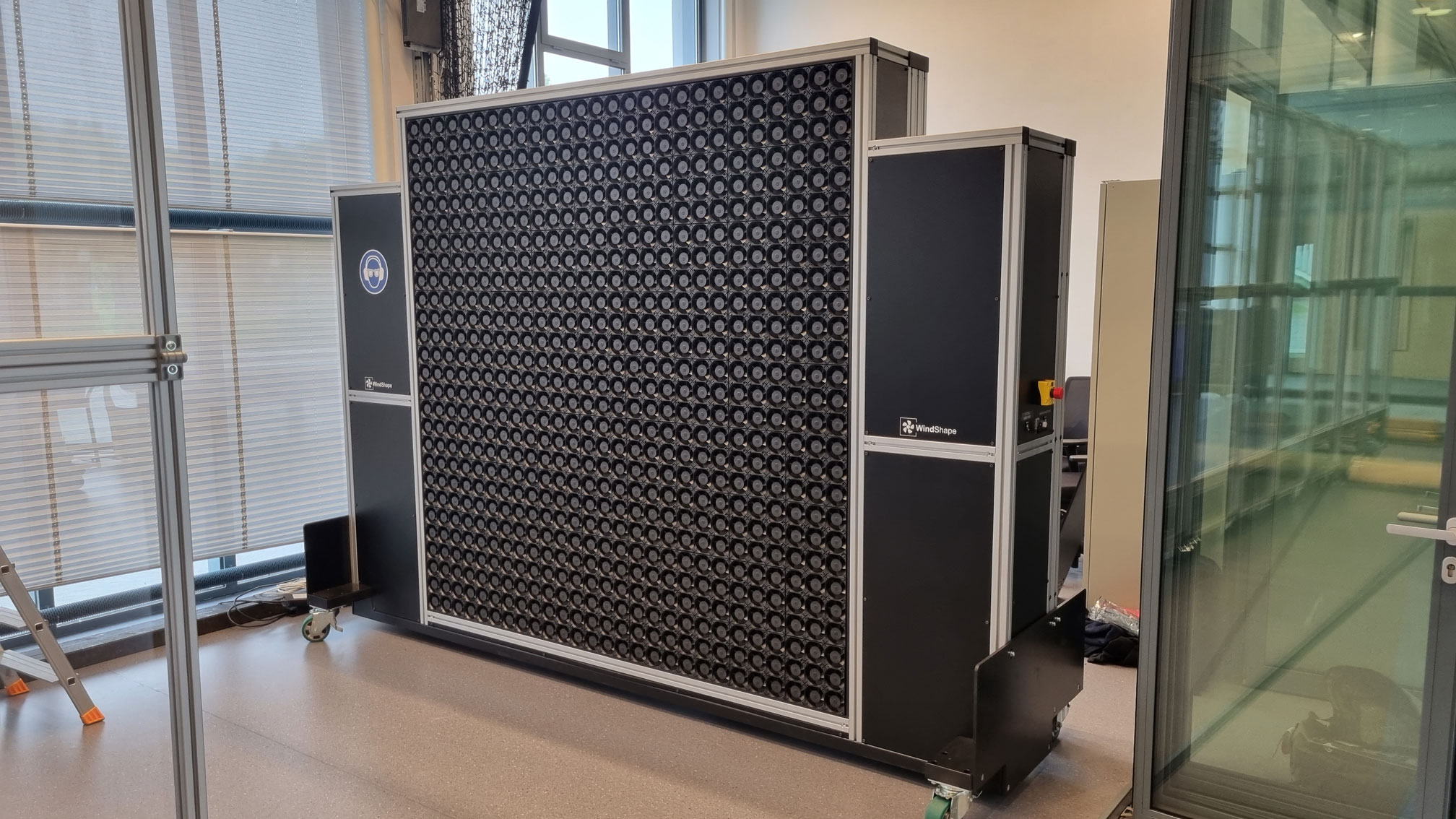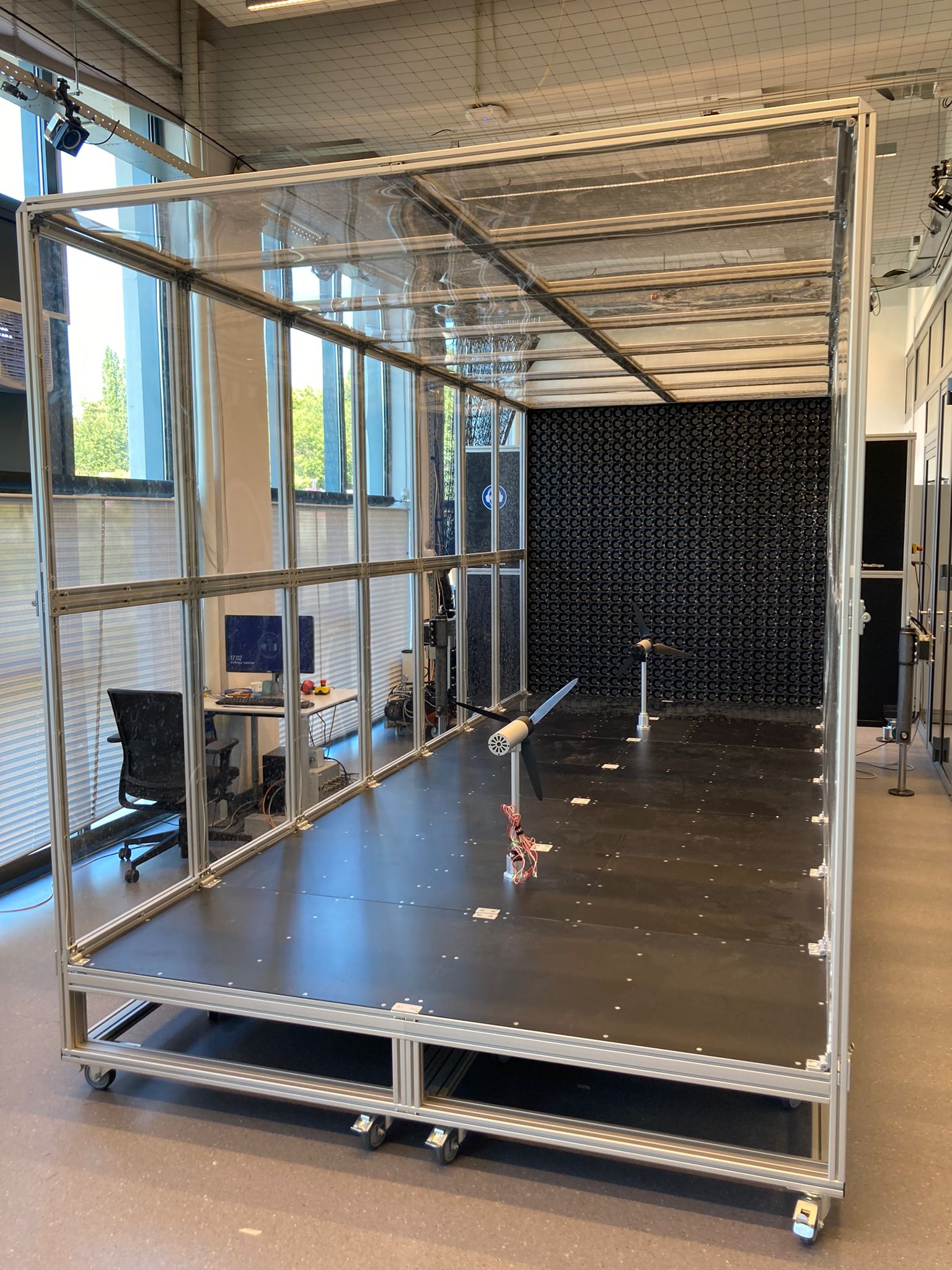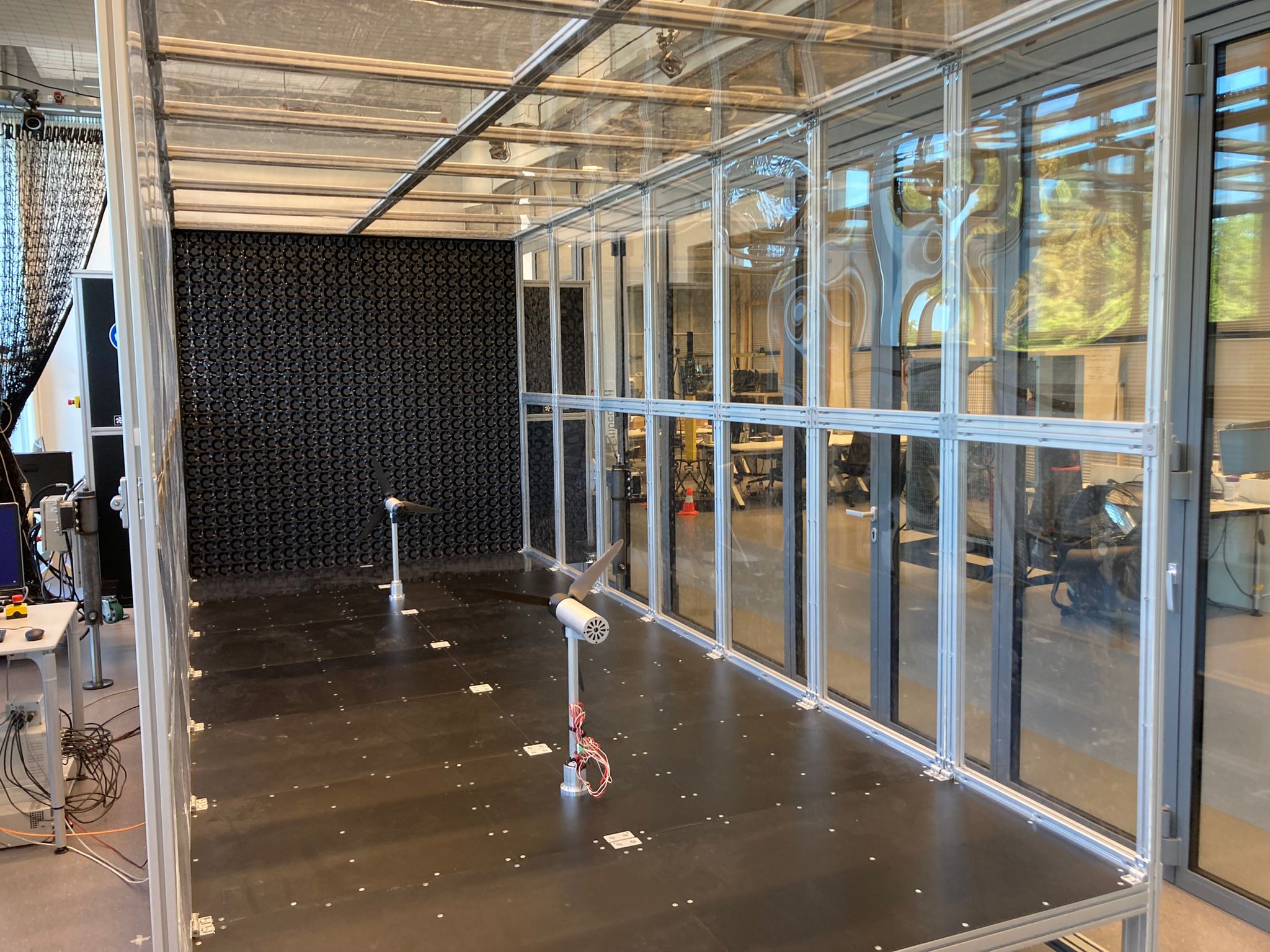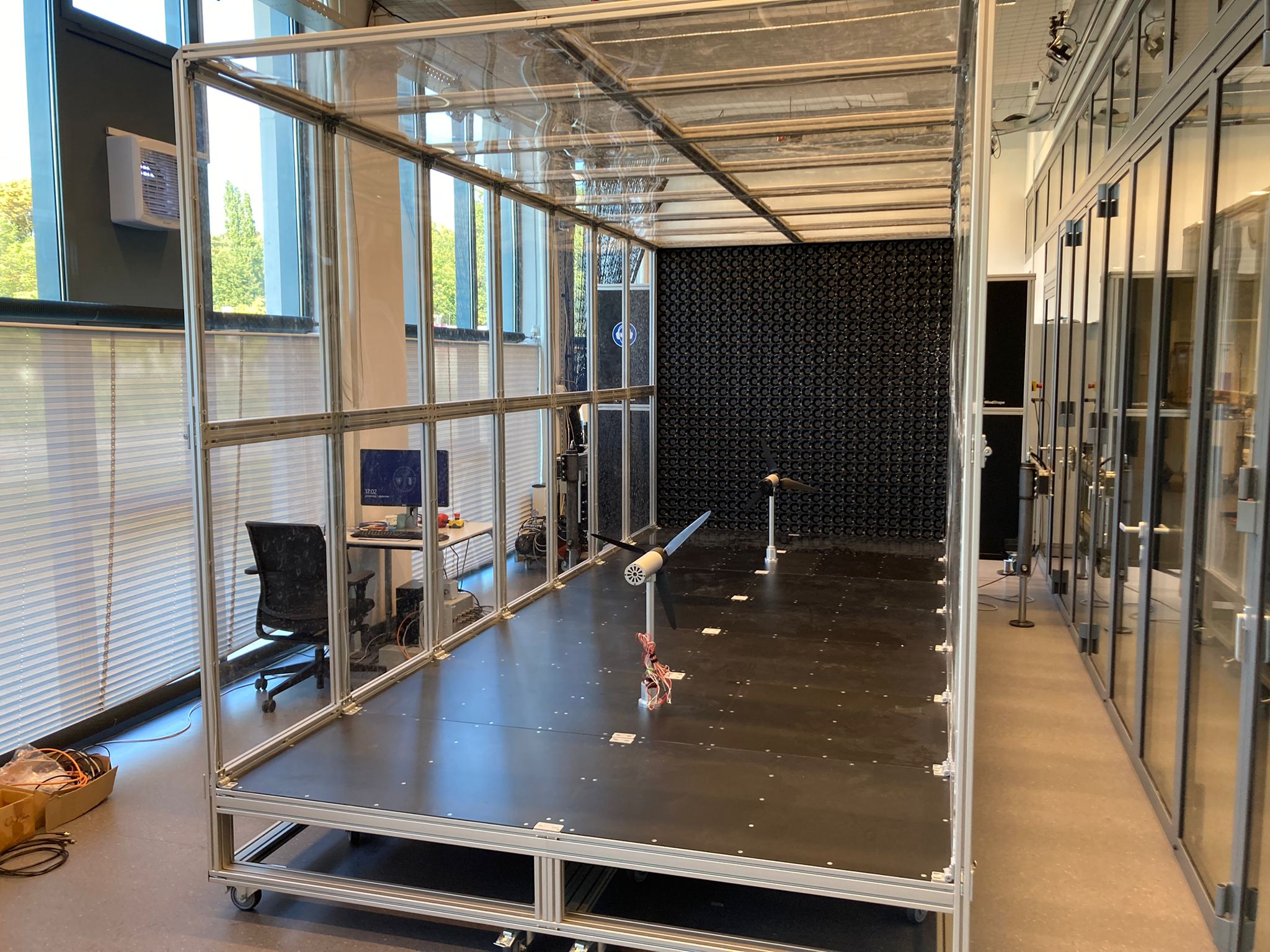TU Delft opens globally unique wind tunnel
The wind is never constant and varies constantly, both in terms of space and time. In addition, wind turbines are getting bigger and bigger and the wind speed is never the same on every part of the rotor – the rotating part of a wind turbine. That is why it is important to carry out experiments using non-uniform wind fields: fields in which the wind speed is not the same everywhere. With the opening of TU Delft’s Wind AI Lab – a globally unique wind tunnel – this will become possible.
Wind tunnels are large tubes through which air blows. They are often used to simulate the interaction between air and a scale model of an object. However, a “normal” wind tunnel only partly shows how air reacts to wind turbines, explains Jan-Willem van Wingerden who is carrying out research at TU Delft in order to find the optimum design for a wind farm and maximise the amount of energy it produces.
Van Wingerden: ‘While we are able to increase and reduce the wind speed as a whole with the current wind tunnels, the speed is always virtually the same in this type of space. Because wind turbines are getting bigger and bigger – they can sometimes be 220 metres in diameter – the wind speed is never the same at every point on the rotating blade. That is why it is important for us to be able to carry out experiments using non-uniform wind fields. Our brand new Wind AI Lab will make this possible. In this lab, there is a huge device consisting of lots of small fans that can be controlled separately from each other. This makes it possible to simulate light to blustery winds and thus learn a lot about increasing the energy efficiency of wind turbines and therefore wind farms.’
Wake
Specific wind tunnel experiments are required in order to validate new control and operational strategies for floating wind turbines and farms. One of the things that will be looked at in the Wind AI Lab is wake. Van Wingerden: ‘The energy that is extracted from the wind leads to a significant reduction in the wind speed immediately behind the turbine. However in the wake – an area up to several hundred metres behind the turbine – the wind gradually returns to the wind speed that would prevail without wind turbines. Interference among wind turbines is therefore inevitable but you can reduce that interference and limit energy losses through the design of a wind farm. We are trying to do something about that using smart control technologies. For instance, you can steer the wake by tilting a turbine slightly in relation to the wind, for example, so that all or part of the wake behind the turbine is guided around the next turbine. This tilt means that you generate less energy at the level of the individual turbine because the turbine is not facing the front with the rotor in the wind but if you carry out this optimisation for each wind direction – and therefore for all the turbines within the farm – then you can achieve energy gains.’
Acceleration
The strong commitment of TU Delft to wind energy is nothing new. For instance back in April this year, the university opened the Floating Renewables Lab: a lab facility that will tie together all the elements of the development chain for floating wind turbines and other offshore sources of renewable energy, with the help of numerical models and AI. The brand new Wind AI Lab is an important part of that.
Incidentally, shortly after the opening of the Floating Renewables Lab, the heads of government from the North Sea countries – the Netherlands, Denmark, Germany and Belgium – announced that they would be drastically increasing the number of offshore wind turbines. The capacity should have gone up to 65 gigawatts by 2030 and 150 gigawatts by 2050 which is ten times the current capacity. According to Van Wingerden, it is an inevitable development: ‘Record-breaking temperatures, floods, melting sea ice, fierce winds: radical weather conditions are becoming more and more frequent and have a devastating effect on our lives. If nothing is done about it, our planet will become virtually uninhabitable before we know it. It is therefore not without reason that TU Delft – which celebrates its 180-year anniversary this year – is so committed to accelerating the energy transition. With around a thousand energy researchers, TU Delft is one of Europe’s largest research institutes in this field. We can help to do that with the Wind AI Lab.’
Dream
The ultimate scientific dream of Jan-Willem van Wingerden? ‘At the moment, offshore wind turbines are still lined up neatly in a row. But by 2030, everything should be different. From then on, “smart” wind turbines will work together as a team: after consulting with the others, a wind turbine will float off to the most energy-efficient offshore location. Think of them like smart, self-driving cars. The objective is therefore to maximise energy production and minimise the load on the wind turbine at the same time.’
More information
For questions about the Wind AI Lab please contact:
- Jan-Willem van Wingerden, , wind turbine measurement and control technology expert at TU Delft – J.W.vanWingerden@tudelft.nl / +31 (0)15 27 81720
- Dave Boomkens, science communications advisor TU Delft – d.j.boomkens@tudelft.nl




